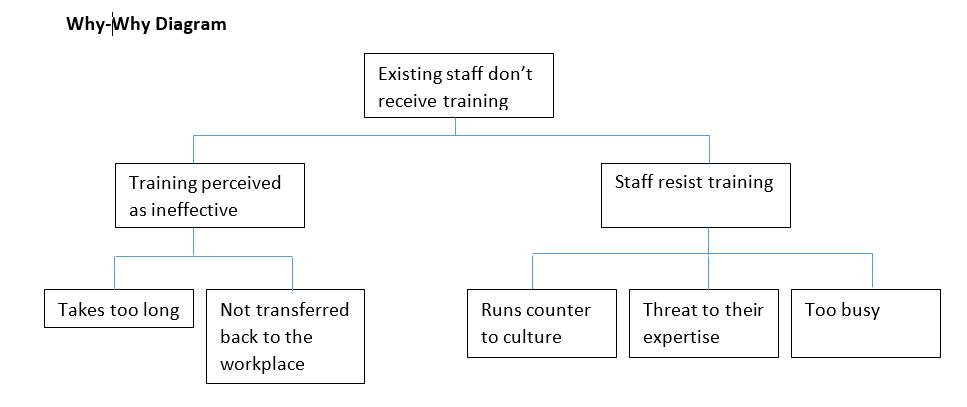Digging out the roots of Problems
Many managers are not good at solving problems. What do we mean? Well, many managers don't dig deep enough. In their haste to prove they can solve problems, they react to the first possible cause of a problem.
“When solving problems, dig at the roots instead of just hacking at the leaves.”
Bryce Hoffman's book: Red Teaming, Transform your business by thinking like the enemy, gives a good example of this technique. The question is why can't our salespeople sell to Fortune 500 companies? Just take a moment and consider some possible answers. Popular answers are the salespeople need training, or we have the wrong salespeople.
“I never learn anything talking. I only learn things when I ask questions.”
A useful technique to get to root-causes: 5 Whys. Simply ask Why five times. In the example of Hoffman, it looked like this:
This is a good example. If managers implemented the obvious answer, in 12 months the managers would be back around the table asking why training was not working. Then, the discussion might turn to the issue of franchisees being unwilling to pay for training. Instead of wasting 12 months, how about using this tool to identify the root-cause and fix it early.
“Ask ‘Why’ five times about every matter.”
Another way to use the Five Whys method is to draw a Why-Why diagram. For example:
Sometimes drawing a Why-Why diagram is more useful when there are multiple causes. However, using the Five Whys method on each branch will ensure you avoid a shallow analysis and embrace a deep analysis.
“Whenever a theory appears to you as the only possible one, take this as a sign that you have neither understood the theory nor the problem which it was intended to solve.”
A Practical Warning
Asking why is a powerful technique.
“In theory, there is no difference between theory and practice. But, in practice, there is.”
Asking why can provoke a defensive response. Imagine someone quietly asks: why did you do that? Most of us react to that innocent question by wondering if we have done something wrong. That means the question can be seen as a threat and will promote a defensive reaction. Defensive reactions do not encourage deep and open thinking about the answer to this question. So, asking why is what we want to do in theory, but in practice asking a slightly different question will give much better answers. Different questions work better because they don't promote defensive reactions. Here are some useful alternatives:
To get to the root-cause: What you need to do is understand the causes (the reasons why), however, what you don't need to do is ask why.




